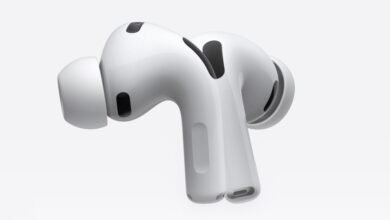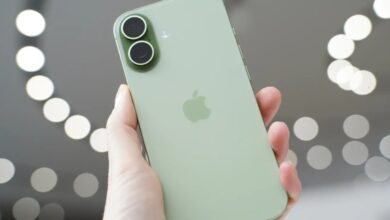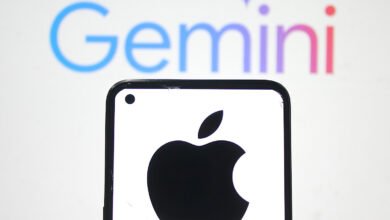My 2025 iPhone Upgrade Advice Has Radically Changed

▼ Summary
– The iPhone 17 base model offers exceptional value with major upgrades like a 120Hz ProMotion display, improved cameras, and 256GB base storage at $799, making it comparable to last year’s Pro model.
– The iPhone Air is an ultra-thin, futuristic device that serves as a technology demonstrator but has trade-offs like weaker battery life and cameras, making it best for tech enthusiasts.
– The iPhone 17 Pro and Pro Max address previous overheating issues by switching to an aluminum casing and adding a vapor chamber cooling system for better thermal management.
– Apple upgraded the telephoto zoom on the Pro models to a 48MP sensor with 4x optical zoom and an 8x cropped mode, significantly improving zoom photo quality over earlier models.
– The author’s buying advice has changed, recommending the base iPhone 17 for many users to save money and suggesting the Pro Max for those who faced overheating or zoom issues with prior Pro models.
Making the right choice for your next iPhone has never been more challenging, yet the iPhone 17 lineup for 2025 presents a surprisingly strong case for each of its four distinct models. The sheer quality across the board means your final decision will likely come down to personal priorities and budget, rather than settling for a device with obvious shortcomings.
This year, my long-standing upgrade advice has shifted dramatically. Having upgraded annually since the original iPhone and spending extensive time with all the new models, I find my recommendations are completely different from previous years. Let’s break down each model and identify the ideal user for every option.
The standard iPhone 17 at $799 now appeals to a much wider audience.
In the past, I typically suggested the base model for younger users, first-time iPhone buyers, or those simply replacing a broken or aging device on a tight budget. That perspective no longer applies.
Apple packed an unexpected number of enhancements into this year’s standard iPhone. The display received a major overhaul, growing to 6.3 inches with dramatically thinner bezels. It now features a smooth 120Hz ProMotion display, a blinding 3000 nits of peak brightness, an anti-reflective coating, and an always-on display.
Camera capabilities also took a significant leap forward. The iPhone 17 now sports a 48MP dual fusion camera system, pairing a 48MP main sensor with a 48MP ultrawide. Critically, it also inherits the same advanced 24MP selfie camera found on the Pro and Air models. This new front-facing sensor captures 18MP images and can intelligently switch between portrait and landscape orientation without requiring you to physically rotate the phone. Its machine learning can even detect multiple faces and automatically select the best orientation for the shot. It’s commendable that Apple didn’t reserve this innovative camera tech exclusively for its premium phones.
Perhaps the most compelling aspect is the value. Apple held the price at $799 while doubling the base storage to 256GB. Considering that a 256GB iPhone 16 cost $899 last year, this effectively represents a $100 price reduction. When you stack it against last year’s iPhone 16 Pro, which started at $999 for 128GB, the value proposition becomes undeniable. The base iPhone 17 is nearly identical to the previous Pro model, lacking only the telephoto lens but gaining the next-generation selfie and dual-capture camera.
Consequently, I now confidently recommend the standard iPhone 17 to many users I would have previously directed toward the Pro line. If you rarely use the telephoto zoom and are upgrading from an iPhone 14 Pro or older, the iPhone 17 delivers tremendous power and sophistication while saving you several hundred dollars.
The iPhone Air provides an early glimpse into tomorrow’s technology.
The iPhone Air occupies a historically difficult position in the lineup, situated between the base model and the Pros, a slot where models like the iPhone Mini and Plus have struggled to gain significant traction.
Similar to Samsung’s Galaxy S25 Edge, the iPhone Air serves as a technological showcase, demonstrating how thin engineers can make a traditional phone. Many see it as a precursor to the anticipated foldable iPhone, expected in 2026.
Despite its challenging position, the iPhone Air generates an undeniable “wow” factor the moment you hold it. Its incredibly thin, lightweight, and futuristic design is genuinely impressive. I urge you to visit a store and experience the sensation of holding a device that’s barely wider than a USB-C port. It stands as one of 2025’s most remarkable engineering feats.
But is it the right phone for you? For most people upgrading, the answer is probably no. The standard iPhone 17 offers superior cameras at a lower price. True power users will likely find the iPhone Air’s battery life and camera system insufficient for their needs.
However, if you are a tech enthusiast who loves being first to experience the cutting edge, the iPhone Air will likely thrill you. You’re probably the type of person who was eager to try Google Glass or the Apple Vision Pro, and you’re a prime candidate for the future foldable iPhone. The iPhone Air lets you inhabit that future today, though you should definitely consider the bumper case if your daily screen time exceeds four hours.
The iPhone 17 Pro Max directly tackles its predecessors’ most significant flaws.
I’ve greatly enjoyed using the iPhone 15 Pro Max and iPhone 16 Pro Max over the last two years, particularly their main cameras, which I used more than any other camera I own. However, both models shared two persistent issues that were hard to ignore.
First, the telephoto zoom camera’s quality simply didn’t match the excellence of the main camera. While the 5x zoom was acceptable for social media, image quality deteriorated noticeably during editing, often forcing me to use my professional mirrorless camera for high-quality zoom shots.
The second major issue was frequent overheating. During intensive photo or video sessions, in areas with poor cellular signals, or when left in direct sunlight, these titanium phones would become uncomfortably hot. This overheating also triggered rapid battery drain, which is not what you expect from a premium device.
I’m pleased to report that Apple has squarely addressed both problems in the iPhone 17 Pro Max. The standard iPhone 17 Pro is identical in every way except for its smaller 6.3-inch screen and battery.
Let’s start with thermals. Apple has abandoned titanium for the casing, returning to aluminum, which is five to ten times more effective at conducting and dispersing heat. They’ve also incorporated a vapor chamber cooling system that uses deionized water to keep the powerful A19 Pro chip cool, allowing it to perform at its peak without throttling. While long-term testing is needed, the design clearly confronts the overheating problem head-on.
The telephoto zoom camera has also seen major improvements. Apple upgraded the tetraprism zoom from a 12MP to a 48MP sensor, matching the main camera. They also adjusted the optical zoom to 4x instead of 5x, which initially seemed like a step back. However, the higher megapixel count enables an 8x digital zoom that is cropped to a 12MP output, which Apple confidently labels “optical quality.” My initial tests are promising; the 8x zoom produces higher-quality images than any previous iPhone zoom I’ve used.
Naturally, I require more extensive testing with the zoom camera and a comparison against competitors like the Pixel 10 Pro XL before giving a final verdict. A dedicated camera review will follow in early October.
That leads to a recommendation I’ve never made before, albeit with a caveat. If you, like me, experienced significant overheating and zoom quality issues with the iPhone 15 Pro Max or iPhone 16 Pro Max, you might want to contemplate a faster-than-usual upgrade to the iPhone 17 Pro Max this year. I will conduct more rigorous testing in the coming weeks and will report back, while also keeping an eye out for attractive trade-in deals that could make such an upgrade more financially palatable.
(Source: ZDNET)




